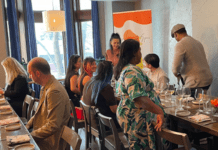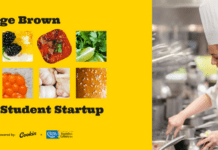If you’d like some insight into how the restaurant and hospitality industry can adjust to what patrons are now expecting, you’ve come to the right place. In support of our hospitality clients, we fielded research and the results may be helpful for the restaurant and hospitality industry. Our goals for the research were to discover what frequent restaurant patrons think and feel about dining out and takeout after living with the lockdown; uncover implications for restaurants; and look for ways restaurants might want to respond in order to welcome people back in the way they want to be welcomed.
On May 8 and 9, 2020, we surveyed 600 frequent restaurant patrons living in Canada. We were able to get an even spread of incomes and ages, with a 49/49 split between males and females (the rest identified in other ways). It’s important to note this doesn’t necessarily represent all Canadians and the sample doesn’t fully represent the demographics of the Canadian population, but the learnings will be instructive and useful. The findings can be summarized in six points.
Who’s Coming for Dinner
We wanted to find out who was going to be first out of the gate and found the least cautious about returning to dine out were the 25- to 34-year-old respondents. Chalk that up to the fearlessness of youth or perhaps they were less concerned about attracting the virus. We also found those with up to “some university education,” were going to be most likely to dine out as soon as possible. Not surprisingly, when you look at the data from the perspective of living arrangements, we also found those living with parents, as well as singles, were likely to be among the first to dine out once lockdown ends and you may be seeing that in your own business, regardless of whether that was your core market to begin with. Now that businesses are re-opening you should expect to see those who were less initially cautious.
Drivers of Meaning
The hospitality industry provides a great deal of meaning to our society — and never more so than in difficult times. In order to fully understand how the industry can, and should, be of service, we wanted to find out more specifics about what drives that sense of meaning for diners. Unsurprisingly, we found there are two main drivers of meaning for frequent restaurant patrons. First, escape. In other words, getting out of the house, being social and being entertained while doing so. Second, self-care. Specifically, that means not having to cook and getting food they aren’t able to get at home. These two drivers of meaning were vital before the lockdown and are arguably even more important now. As we look for ways to help our cities and towns make their way through this, these two factors are likely to be paramount on the minds of your patrons. This is important to your marketing and product teams because, if you know that’s where the meaning lies, you can adjust your messaging and planning accordingly. Even if you don’t change anything operationally, speaking about it in terms of escape and self-care is going to have a better chance of addressing the meaning patrons expect to get.
Addressing Concerns
Of course, your patrons have concerns about going back out to dine at your restaurant
and it’s obviously critical to address those concerns from the start in order to provide the comfort they need. The biggest concerns we found were around social distancing inside the restaurant and hygiene. Restaurants will need to communicate about the layout of the space, standards of cleanliness, lineup distancing, patrons’ responsibilities for self-hygiene and directly address concerns around infected staff and food. Normally those would be the last things we’d want to discuss with people and, certainly, we’d never want to plant those kinds of ideas in patrons’ minds. But that’s the world we’re in; safety is a value-added feature and opportunity to differentiate your offering.
Women See it Differently
Our female respondents were more likely than the males to be concerned and cautious about dining out. The males were much more sanguine about the risks. We also found females are more likely to value not having to cook, having access to ingredients they don’t have at home and self-care from dining out or getting takeout. If you find your female patrons are also the primary decision-makers about dining out, this is going to be important to know how to address their concerns and what they expect to get from their time with you.
Takeout Growth
Our research shows 37 per cent of our respondents intend to get takeout more after lockdown than they did before. The reasons for takeout are varied, complex and not necessarily the same as dining out. Restaurants offering takeout should clearly understand their target market and focus marketing and operations on serving their specific needs, not simply assume the same drivers for dining out apply to takeout. Our respondents said what they like most about takeout is better food, convenience, no cooking, being comfortable at home and no cleanup. Arguably, those things haven’t changed since pre-COVID-19.
Skip SkipTheDishes
We found 45 per cent of our respondents wanted takeout delivered, while 51-per- cent prefer to pick it up at the restaurant. Counterintuitively, the older generation (55-plus) is more likely to prefer picking up at the restaurant. If restaurants can create a compelling pick-up experience, 55-plus diners may be more likely to come for pick-up and pay the restaurant directly instead of using third parties.
While these are the highlights of what we found in our research, the full study, which can be accessed here, delves more into demographic details about who thinks what. See you on the patio.
By Dr. Mark Szabo.
He is the director, Insights & Engagement at Calgary-based Anstice.
He can be reached at [email protected]

















